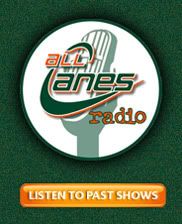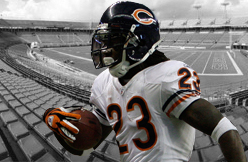It comes off as stating the obvious, but perhaps Chicago Bears coach Lovie Smith is on to something when stressing the need to get the ball more to receiver Devin Hester.
Arguably the most dangerous threat in pro football with the ball in his hands, Hester is scheduled to receive a $10 million roster bonus in 2012 after earning $1.58 million in base salary for the 2011 season. So while it might be premature to ponder the financial implications, perhaps -- frankly put -- it’s time for Hester to earn the money.
Despite Hester’s already record-breaking contributions, receivers averaging 42 catches for 549 yards over four years don’t receive such lucrative bonuses. Nor do return specialists, regardless how electric.
“He didn’t get into the mix as [a receiver] as much as he would have liked [during the 2010 season],” Smith said. “I liked what he was able to do in the return game. I just think it’s hard sometimes balancing the both of them. I know he’s a dangerous guy with his hands on the ball. It’s up to us to try to find more ways to give him the football.”
Increased snaps on offense aren’t necessarily the way to go, Smith said, before mentioning the team already has several weapons in running back Matt Forte, tight end Greg Olsen, and receivers Johnny Knox and Earl Bennett. Hester finished the season ranked No. 1 in the NFL in punt return average (17.1 yards, which was also ninth-best in NFL history) and caught 40 passes for 475 yards. He ranks fourth in league history in punt return average (12.4 yards).
In becoming just the 10th player in league history to gain 2,000 combined career yards receiving and on punt and kickoff returns, Hester finished 2010 with 564 yards on punt returns and 427 on kickoffs.
So increasing his snap count on offense could cause more harm than good to Hester’s bid to make meaningful contributions in the return game. Smith wasn’t sure whether there was a correlation between Hester’s snaps on offense and how he performed on special teams.
But that appears to be the case.
Interestingly, Hester’s three most impactful performances in the return game of 2010 (Sept. 27 against Green Bay, Oct. 17 against Seattle and Dec. 20 at Minnesota) netted 332 yards on seven returns for three touchdowns, but he caught a combined five passes for 55 yards. On the flip side, Hester hauled in 10 passes for 211 yards and two touchdowns in his three best receiving games in terms of yardage (Sept. 19 against Dallas, Nov. 28 against Philadelphia and Dec. 26 against the New York Giants), while contributing just 160 yards on seven punt and kickoff returns for no TDs.
“You can always make an argument for that. I just don’t know,” Smith said. “I just know Devin really helped us a lot offensively. Offensively, I’m talking about the offensive part of special teams, too. I know there was a major change in his production to just help us put points on the board last year. I was pleased with that. How [that happens], whether it’s [on] special teams, offense, that shouldn’t be a major part of the discussion.”
What seems germane, however, is how the team can apply Hester’s talents in the most impactful way to essentially, receive the most bang for its buck.
It’s something the Bears will study throughout the offseason and continue to experiment with once the NFL lockout comes to a close.
“You know, the snaps part, I would like to see us find a way to get him the ball more maybe in certain situations. That’s what we’re probably looking at more so than probably just reps. [It’s] more of what we’re doing with him on his reps out there,” Smith said. “So to take away some of his reps and be able to get him involved more on the ones he’s out there, [we’d like to do that] probably more than anything.”
Click here to order Devin Hester’s proCane Rookie Card.

(espn.com)



